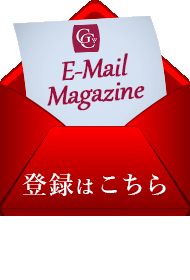- ホーム
- ワインを良い状態で保管するために
ワインを良い状態で保管するために
To keep wine in good conditions
To keep them in good conditions we recommend that you store them:
- ワインボトルを横にする。
- 光が当たらない暗い場所で保管する。
- 振動させない。
- 12〜15℃で保管する。
- 高温だとワインの酸化が進み、低温だと熟成を遅らせるので、激しい温度変化を避ける。
- 乾燥しすぎた環境だとコルクが乾きすぎるので、65〜75%の相対湿度で保管する。
- Lying down.
- In a dark place.
- Free from vibrations.
- At a temperature of 12-15 degrees Centigrade:
- Try to avoid large temperature variations as warm temperatures accelerate the ageing process while cool temperatures slow the ageing process.
- At a relative humidity of about 60-70%, as too dry storage conditions risk to dry out the corks.
To serve them in perfect conditions we recommend that:
- ワイン到着後2〜3週間寝かせてから飲み始める。
- コルクに熟成で生じたカビがある時は、洗剤で洗わずに、湿らせた清潔な布で拭き取る。
- 若いライトボディの白ワインは10〜12℃で飲む。
- 年代を経たフルボディの白ワインは12〜14℃で飲む。
- ワインは冷蔵庫又は氷水を満たした器で冷やす。
- 若いライトボディの赤ワインは14〜16℃で飲む。
- 年代を経たフルボディの赤ワインは17〜20℃で飲む。
- 温度が低い赤ワインは、立てた状態で室内にしばらく置いて温度を上げる。
- (シャンパン、ゼクト、カヴァなどの)スパークリングワインは8℃ぐらいで飲む。
- You start to serve them a few weeks after arrival.
- Use a clean, damp cloth to wipe off cellar mold from a cork (do not use detergent).
- Serve younger and lighter white wines at about 10-12 degrees Centigrade.
- Serve older and fuller white wines at about 12-14 degrees Centigrade.
- Cool wines in the refrigerator or a bucket filled with ice and water.
- Serve younger and lighter red wines at about 14-16 degrees Centigrade.
- serve older and fuller red wines at about 17-20 degrees Centigrade.
- Warm-up cooler red wine by placing them upright in a room for a while.
About Sparkling Wine
スパークリングワインの抜栓中の事故を避けるために:
- ボトルを良く冷やす。
- ボトルを振らない。
- 針金のすぐ下で装飾メタルホイルを切り、その上部ははがすが、ボトル上の装飾ホイルははがさない。
- 抜栓のためにナプキンをコルク上に被せる。
- 片手でコルクの上をしっかり押さえたまま、針金を緩める。
- コルクに片手をかけたまま、もう一方の手でボトルをつかむ。
- コルクの飛び出しによる事故を避けるため、ボトル口を他の人や自分の方に向けない。
- 片手をコルクにかけたまま、コルクを回すのでなく、もう一方の手でボトルを回す。
- コルクが緩んできたら、優しくガスを抜く。
- ポンと音を立てずに、ゆっくりコルクを抜く。
- ボトル口を拭く。
- グラスを傾け、グラス壁面にそって(泡を立てないように)少しスパークリングワインを注ぎ、さらに泡を立てないようにグラスに注ぐ。
- 若いフルボディのワインや特に10年以上の年代を経たワインは、空気と触れさせることをお勧めします。
- 若いワインは、飲み始める前に数時間デキャンタージュする。
- ボディタイプによって、年代を経たワインはおよそ30分から2時間デキャンタージュする。
Serve Sparkling wines (Champagne, Sekt, Cava, etc.,) at about 8 degrees Centigrade:
- Chill the bottle well.
- Do not shake it.
- Take off the upper part of the decorative metal foil, try not to damage the lower part of it.
- Place a napkin over the cork prior to opening it.
- Keep one hand on the cork at all times, then unwind the wire hood,
- While holding the cork, grasp the bottle in the other hand,
- Tilt the bottle away from you and others to avoid a possible accident,
- While holding the cork in one hand twist the bottle, not the cork,
- Let the pressure of the bubble gently ease out the cork.
- remove the cork with a discreet sigh not a boisterous bang.
- Wipe the brim of the bottle.
- tilt the glass and pour a little wine down the side (it will foam less), pour more as the foam recedes.
-
Airing is recommended for younger, full-bodied wines and older wines particularly over 10 year old.
- Decant younger wines some hours before serving them.
- Decant older wines shortly before serving them (about 1/2 hour to 2 hours depending upon its body).
About the condition of wine
酒石と澱(おり)
酒石(酒石酸結晶)を含んでいることがあります。
酒石は欠陥でなく、構成のしっかりしたフルボディのワインである証です。
低温になったときや熟成過程でできます。
ワインを注意深く注ぎ、ボトルの下に残してください。
万一飲んだとしても無味・無害です。
赤ワインは熟成するとブドウからの澱や酒石を含んでいることがあります。
酒石は多少苦味がありますが無害です。
ワインを注意深く(グラスやデキャンタに)注ぐことでボトルの下に残してください。
酒石や澱を含んでいるワインは、輸送後、色が?濁る″ことがあります。
ワインの味に影響している可能性があるので、その状態でそのボトルを抜栓しないでください。
”濁った”色のワインは24〜48時間立たせて酒石や澱を沈着させ、抜栓時やデキャンタージュ中は慎重に取り扱ってください。
Tartrates and Sediments
White wines may contain tartrates (tartaric crystals).
Tartrates are a sign of a well-structured, full-bodied wine, rather than a defect.
They are due to cold temperatures or old age.
They should be retained in the bottle by pouring the wine carefully. They are tasteless and harmless if consumed.
Red wines may contain tartrates falling out due to old age and grape sediments.
They are harmless but may taste bitter.
They should be retained in the bottle by pouring the wine carefully (into the glass or the decanter).
Wines containing tartrates and sediments may be "cloudy" after having been moved.
Do not open the bottle at such a moment as the taste of the wine may be affected.
"Cloudy" wines should be kept standing for 24-48 hours and are to be handled carefully when opened and during decanting.
還元臭
(若くても年代を経ていても)ある種のワイン、とりわけ年代をより長く経たワインが、抜栓直後にワイン特有でない強い臭いを発することがあります。
そのような臭いは欠陥ではありません。
これはボトル内で起こる”元臭”によるもので、ボトル内にほとんど酸素がないことが原因です。
ワインの熟成過程で酸素が少ないのは肯定的なことですが、このような一時的な?還元臭″の原因にもなります。ワインが空気と触れると、特にデキャンダージュすると、そのワインの熟成した豊かなブーケが開いてきます。
Reduction Scent
Certain wines (young and old) but particularly older wines may give off a strong, uncharacteristic smell immediately after opening.
Such a particular smell is not a defect.
It is the result of the "reduction process" taking place in the bottle and is due to the fact that there is almost no oxygen in the bottle.
While such lack of oxygen is positive for the ageing process of the wine, it may result in such temporary "reduction scents."
Airing the wine and particularly decanting it will bring out the wine's full, rich bouquet.
ボトルの外観
完璧な外観が理想ですが、湿度のある冷涼なワインセラーで保管されているボトルの外観に自然な変化が生じてくるのは事実です。
より長く保管されればされるほど、外観は完璧さを失っていきます。
判断基準の明確な定義づけは不可能ですが、ワインの年齢を考慮し、弊社は全てのワインを注意深く検査して、許容範囲を満たしているものだけを選んでいます。
よって、お手元に届けられるワインの外観は(ワイン年齢を考慮すれば)正常です。
Bottle Outfit
While a perfect outfit is the desired aim, it is a fact that the outfit of bottles of wines, stored in a humid and cool cellar undergoes natural changes.
The longer the storage, the more imperfect the outfit may become.
A clear-cut definition is impossible.
However, all wines were inspected carefully and those not up to accepted standards (for their age) were sorted out.
The outfit of the wines you receive are thus considered normal (for their age).
カプセル(キャップシール)
若いワインのカプセルは完璧な状態であるはすですが、中にはわずかなキズや汚れが生じていることもあるかもしれません。
それは、木箱やダンボール箱に保管されている時にできたものです。
ワインの年代か経れば経るほど、腐食を生じる可能性も高まります。
ワインセラー内の湿気もしくはコルク栓をした後にワインがかいた”汗”によるものです。
これが時間経過と共にカプセルを腐食させますが、そのような腐食はワインの品質に影響を及ぼしません。
Capsules
Capsules of younger wines should be in perfect conditions.
However minor abrasions and/or spots may be possible and if so, are mostly due to storage in wooden boxes or cartons. The older the wine, the higher the possibility of corrosion.
It may be due to the humidity in the cellar and/or due to the fact that the wine "sweat" after the cork was pressed into the bottle. This over time may lead to corrosion of the capsule.
However, such corrosion does not affect the quality of the wine.
ワインラベル
若いワインのラベルは完璧な状態であるはすですが、木箱の中で保管されていたために小さなシミやキズが生じていることがあります。
ある程度年数を経たワイン、特に年代が古くなるほどラベルは劣化しがちです。
これは通常起こりうる劣化で、(白い)ラベルが黄ばんだり、もろくなったり、埃をかぶったり、シミが出たり、カビが生えたり、印刷の色が褪せたりといったことです。
注記:
年代物のワインで、元のラベルが余りにも古びたり、もろくなったり、汚れていたり、破損していたりする時は、(新しい)ラベルに貼り直されることがあります。
このような場合にはラベルにその旨が的確に記載されています。
ラベルの貼り替えは、全てワイン醸造元やシャトーで細心の注意と専門的な技術をもって行われます。
Labels
Labels of younger wines should be in perfect condition.
Nonetheless, minor imperfections, such as small spots and minor abrasions are possible and are mostly due to storage in wooden boxes.
The labels of middle-aged and especially older wines may have deteriorated.
Such normal deterioration comprises of yellowing of (white) labels, brittle, dusty, spotty and moldy labels and fading of printing colors.
Note:
Some bottles may have been outfitted with (new) replacement labels as the old labels had become too old, brittle or dirty or because they were damaged.
In most cases such labels are marked accordingly.
Any re-labeling was done with utmost care and professionally at the Ch?・teau or Domaine.
液面の高さ
若いワインの液面の高さはコルク下1〜1.5 cmぐらいです。
しかし、自然蒸発で僅かに減少するとか、瓶詰の段階でワインの量が若干少なかったために、液面の高さが少々低いこともあります。
年代を経たワインの場合は液面が多少下がるのは自然なことです。通常、ワインが年代を経れば経るほど、その液面の高さは低くなると言えます。
ワインはコルクを通して呼吸しているので、ある程度の量がコルクを通して蒸発するのです。
これはコルクの堅さ、そしてもちろん保存状態がかなり影響します。
Filling levels
The filling level of younger wines is about 1-1.5 cm below the cork.
However, slightly lower levels, due to natural evaporation or slightly lower filling levels are possible.
In case of older wines, it is natural that the filling level declines somewhat. As a rule, it can be said, the older the wine, the lower the filling level.
As the wine breathes through the cork, a certain amount of it evaporates through the cork.
Much depends upon the tightness of the cork and, of course, the storage conditions.
ご質問・ご不明点等がございましたら、グキ・セラーズ カスタマー サービスまでご連絡ください。
If you have any questions, please contact GUKI CELLARS Customer Service:
service@gukicellars-online.jp 045-550-5490






